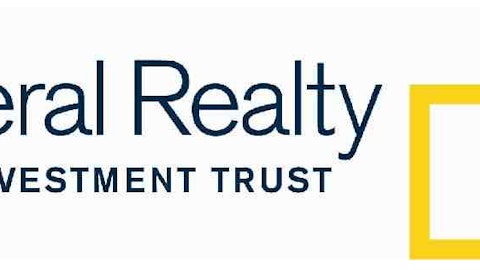
The lineup
The first REIT we will discuss is HCP, Inc. (NYSE:HCP), which leases to a wide range of healthcare tenants including hospitals, research labs, and senior care housing. As one can imagine, moving a hospital, research lab, or senior community center to another location is a difficult task — think about the disruptions it would cause sick, bedridden patients to have to be moved to another location, or the burden it would cause to transport medical equipment. Perhaps due to the sticky nature of its healthcare customer base, HCP, Inc. (NYSE:HCP) has been able to secure favorable triple-net leases (which shift the burden of operating expenses such as utilities and tax on the customer and also mandate automatic rent increases during the life of the lease) for the majority of its current leases, which allows it to generate steady and fat profit margins from year to year.
The second REIT is Government Properties Income Trust (NYSE:GOV), which primarily leases to the state and federal government. When it comes to financial stability and creditworthiness, it doesn’t get much better than the U.S. government, which is a plus for this REIT. Some investors may worry about the ongoing government budget cuts, but that hasn’t slowed down Government Properties Income Trust (NYSE:GOV)’ ability to lease to government tenants. The company was able to increase the total number of properties leased from 71 to 84 during the course of 2012. I believe lower public sector spending can actually help the REIT because more government organizations may choose to sell properties they own to raise cash, and instead lease the office space they need. In fact, this own-to-lease trend may be partly responsible for Government Properties Income Trust (NYSE:GOV)’s strong recent results, boding well for the company’s ability to weather government budget cuts.
The last REIT I will mention is Digital Realty Trust, Inc. (NYSE:DLR). Digital Realty Trust, Inc. (NYSE:DLR) operates tech-related properties housing corporate data centers and internet gateways. Corporate data centers in particular are mission critical to DLR’s tenants, as major disruptions at the data center level can bring the daily operations of the entire company to a grinding halt. Much like we saw with HCP, Inc. (NYSE:HCP), this critical nature of the properties leased by DLR gives the company a base of sticky, loyal customers who are loath to move their data center infrastructure to another location. As a result, DLR is also able to implement the landlord-friendly triple net leases on the majority of its properties.
Valuation and conclusion
All three REITs I have mentioned offer compelling dividend yields, ranging from roughly 4.7% for HCP, Inc. (NYSE:HCP) to 5.2% for Digital Realty Trust, Inc. (NYSE:DLR) and 6.7% for Government Properties Income Trust (NYSE:GOV) (based on stock closing price on July 9, 2013). Comparing price-to-earnings ratios for REITs tend to be a futile exercise, so I will compare their price to funds from operations (FFO) ratios instead. The reason for this is because net income incorporates non-cash depreciation expenses, which usually don’t matter for REITs since most of their depreciable assets are land and property. Land and property don’t usually depreciate over time, but may actually gain in value as the years go by and land prices appreciate; therefore, funds from operations, which adds non-cash depreciation expenses back to net income, is a better proxy for a REIT’s true financial performance. Below is a table summarizing the three REIT’s valuation multiples:
Valuation Metrics (based on July 9, 2013 closing share price)
| Share Price | Diluted FFO/ Share | Price/FFO Ratio | Dividend Yield | |
| HCP | $45.08 | $2.72 | 16.6 | 4.7% |
| GOV | $25.66 | $2.09 | 12.3 | 6.7% |
| DLR | $60.38 | $4.44 | 13.6 | 5.2% |
Based on both dividend yield and price to FFO ratios, it seems that Government Properties and Digital Realty Trust, Inc. (NYSE:DLR) offer more reasonable valuations than HCP, Inc. (NYSE:HCP). Valuation for Government Properties Income Trust (NYSE:GOV) looks particularly reasonable, with a dividend yield greatly exceeding the market (and REIT industry) average, and a modest price to FFO ratio. I think Government Properties’ share price may be pressured due to concerns about government budget cuts; however, as I explained previously, tighter public budgets may encourage government entities to lease more and not less as they sell properties they own to raise cash and move operations to leased properties. As such, I believe Government Properties Income Trust (NYSE:GOV) may warrant a look for risk-averse investors who are thirsty for yield.
The article 3 High Yielding REITs with Sticky Tenants originally appeared on Fool.com and is written by John Park.
John Park has no position in any stocks mentioned. The Motley Fool has no position in any of the stocks mentioned. John is a member of The Motley Fool Blog Network — entries represent the personal opinion of the blogger and are not formally edited.
Copyright © 1995 – 2013 The Motley Fool, LLC. All rights reserved. The Motley Fool has a disclosure policy.





